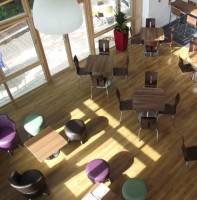August 6, 2013
Effective recycling is about good management as much as it is materials and design
We all like to think we are discerning about what we will and won’t put in our trolleys at the supermarket. Not any old salty, fat-saturated gloop will make the cut these days. That’s why the producers of food like to proclaim its healthiness on packaging, regardless of the nature of the product within. ‘Lower fat’ doesn’t mean low fat. Companies in other sectors follow suit. The office products market is one in which some manufacturers don’t mind a splash of green on product labels. This doesn’t do the customer or the buyer any good and can breed cynicism in the market, undermining the efforts of those suppliers who actually take a sophisticated approach to the environmental performance of their products.






















August 8, 2013
The war against environmental cynicism puts an onus on suppliers to be honest
by Mark Eltringham • Comment, Environment, Furniture
(more…)